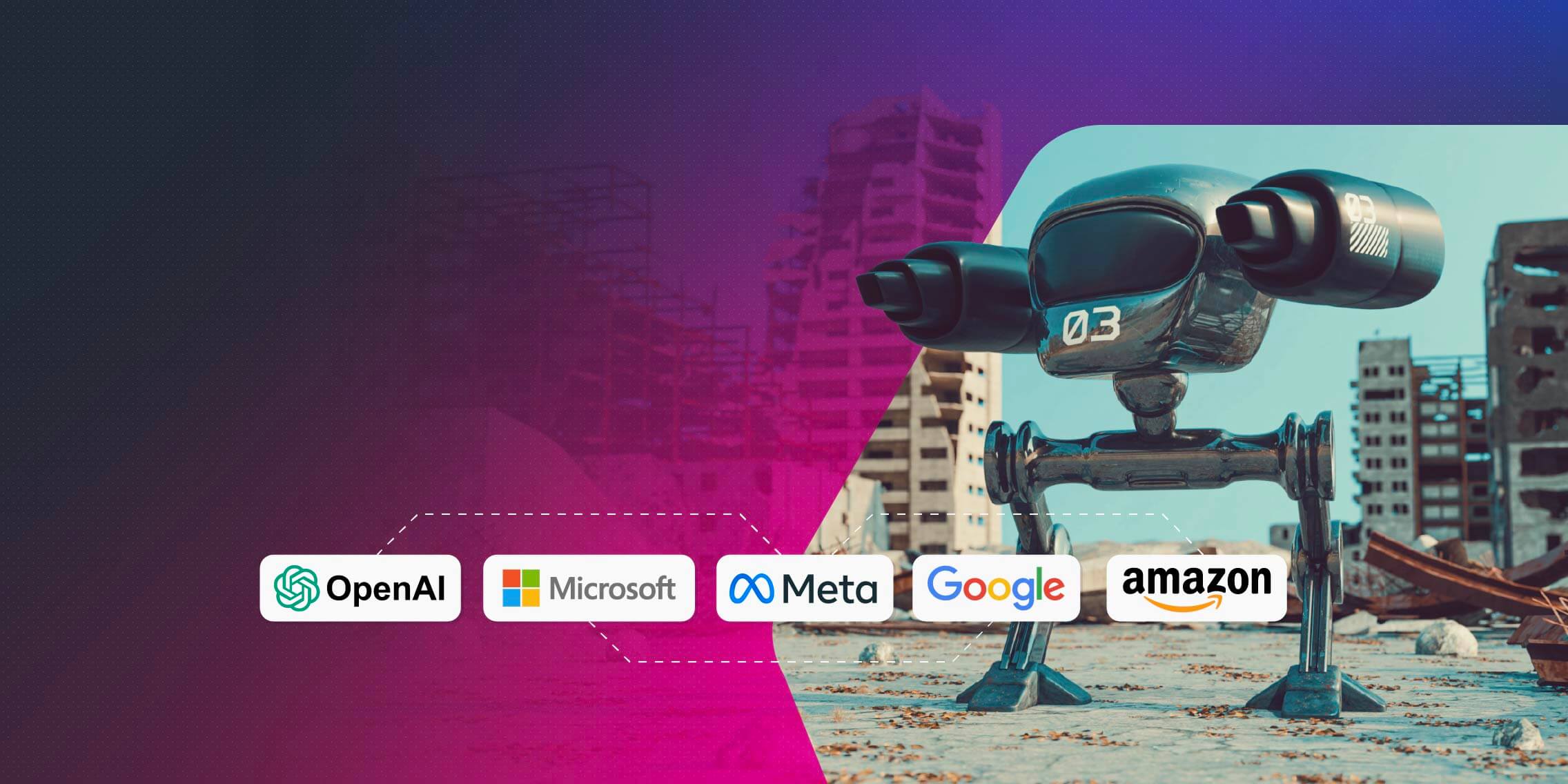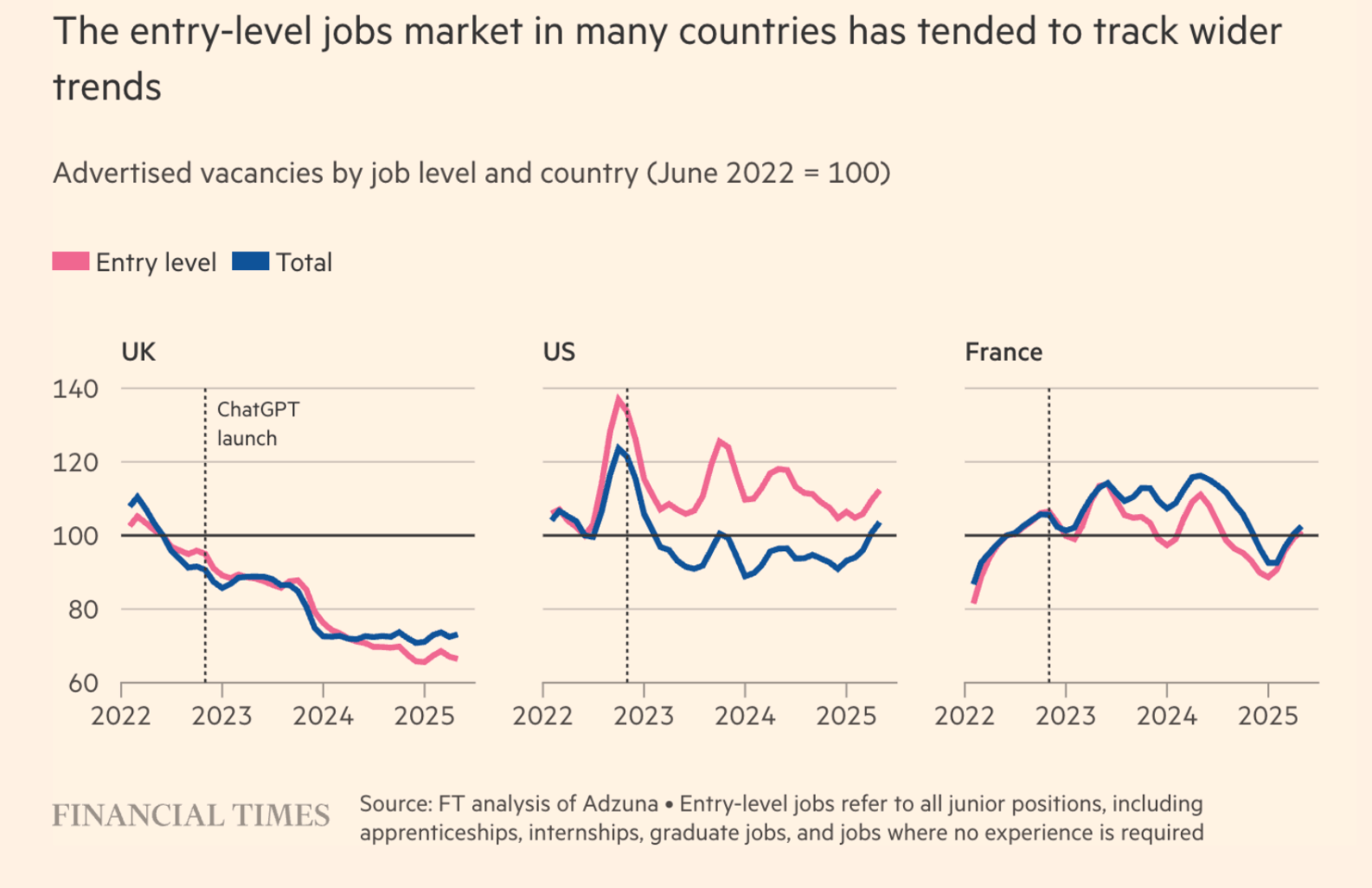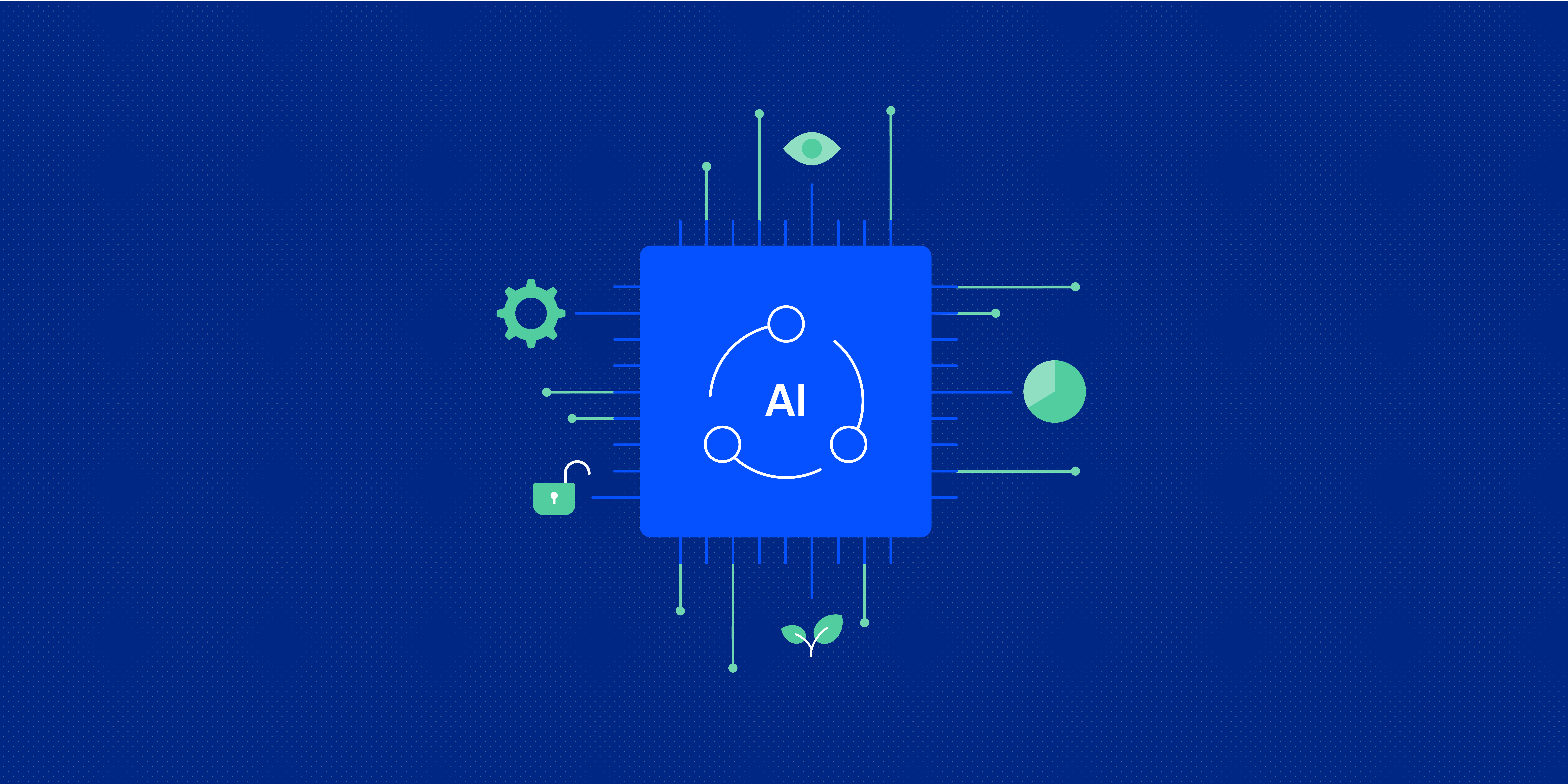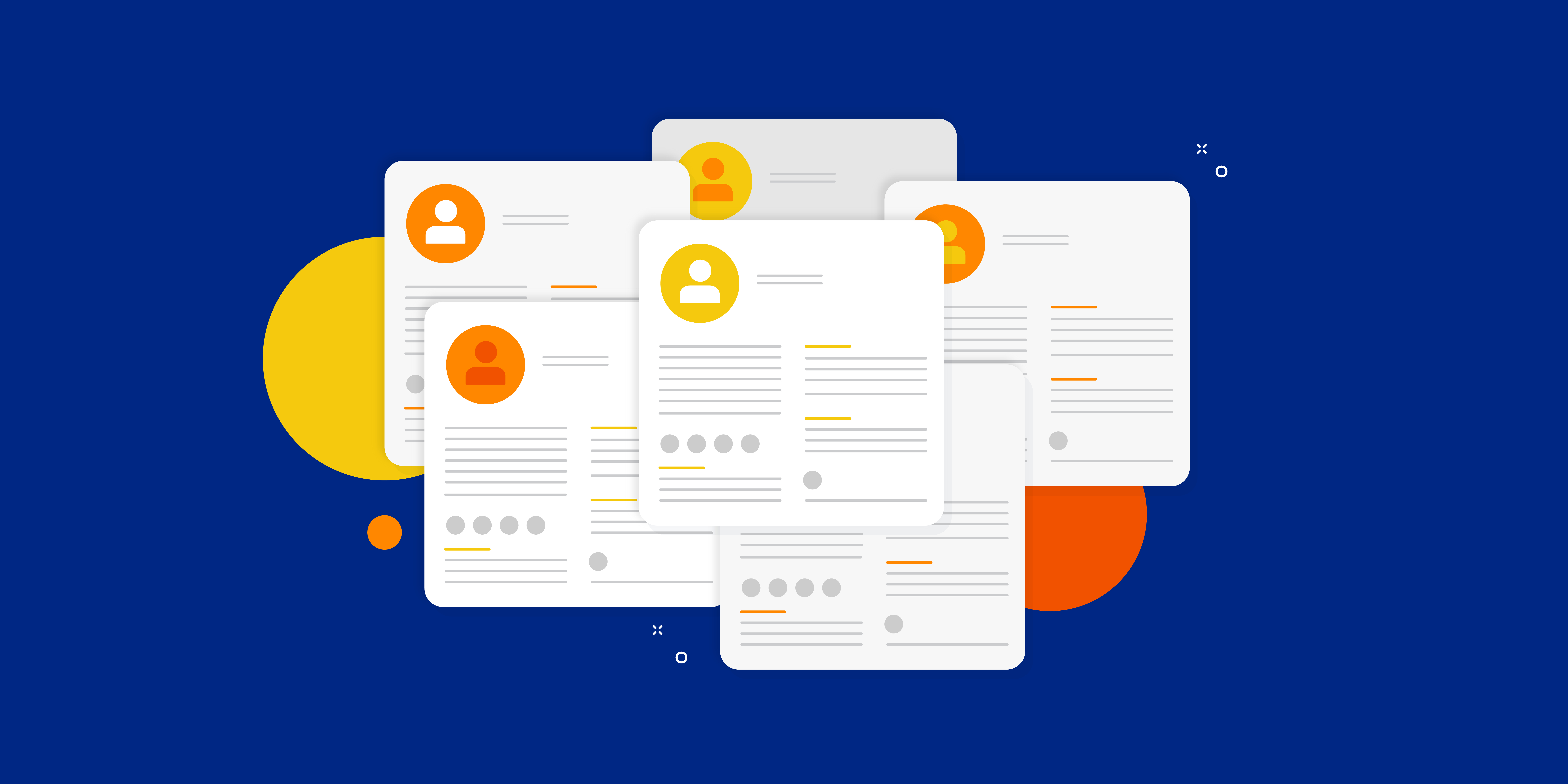Reading the news you would think we are in the middle of an AI-inspired white-collar jobs-pocalypse. Generative AI can design products, draft legal briefs and build websites in seconds. Corporate leaders are wielding the axe and blaming job cuts on an “AI pivot”. Graduate jobs are disappearing. And whole swathes of knowledge work are becoming redundant.
A terrifying scenario. Except it’s not true.
Look closely, and the loudest voices pushing this story just happen to be the same companies pouring billions into AI and selling you their AI services: Microsoft, Amazon, Meta, Google, OpenAI and others. So we should take their claims with a pinch of salt.
As tech journalist Cory Doctorow puts it, “Bragging about replacing coders with AI is a sales-pitch.” If you have invested massively in AI, it pays to promote the idea that your tools can cut jobs and save money.
But the data does not support this narrative.
True, the job market is not as buoyant as it has been, but this is mainly due to standard economic factors. As we’ll see, there is little evidence AI has affected hiring, and none that it is making whole professions defunct.
Graduate jobs follow the wider economy
Let’s start by looking at the graduate job market, which has been getting a lot of press. Postings for graduate-level roles have fallen sharply since mid-2022 in both the UK and the US. On the surface, the timing lines up with the public launch of ChatGPT.
However, the Financial Times finds no clear link between AI exposure and the steepest declines. Sectors often described as “AI-vulnerable” such as law and marketing have not been hit the hardest. In some cases, their declines are smaller than in sectors with far less exposure to automation.
The FT also points out that graduate hiring tends to move in step with overall employment trends. When the wider job market tightens, graduate opportunities usually shrink too. The recent downturn in postings is more consistent with the general cooling of labour markets in the US and UK than with the sudden arrival of AI tools.
Source: Is AI killing graduate jobs?, Financial Times, Aug 2025
Other factors are playing a bigger role. Economic uncertainty is causing employers to slow recruitment. Post-pandemic hiring corrections are still ongoing after the surge of 2021 and 2022. And more entry-level work is being offshored to lower-cost countries. These are familiar patterns from previous downturns rather than signs of sudden AI displacement.
Interestingly, graduate hiring rates and wages have been in decline in the US since 2009, pointing to a long-term structural shift. Harder for graduates, perhaps. But don’t blame AI.
Employment levels are high
If AI were already replacing large numbers of workers, we would see it in labour market data. Instead, employment levels are high in almost all rich world countries.
The Economist reports that US unemployment is about 4.2 percent, close to historic lows. Graduate unemployment is steady at around 6 percent, similar to pre-ChatGPT levels.
Even in roles considered vulnerable to automation such as paralegal work, financial operations and back-office support, the share of total employment has held steady or increased. Jobs in the translation sector, widely seen as a prime AI target, have actually increased by 7 percent year-on-year.
The Economist concludes that “the data simply do not line up with any conceivable mechanism” that would link AI to declining job prospects.
Perhaps this is because adoption of AI is far slower than hype suggests. Less than 10 percent of US firms use AI at scale to produce goods or services. NBC News found many companies are still experimenting and unsure how to make AI pilots profitable.
AI is mostly assisting, not replacing
When AI is deployed, it often speeds up existing work rather than replacing people. Klarna, the fintech that once claimed its AI chatbot could replace 700 customer service agents, reversed course within months, rehiring staff after admitting the AI-led model delivered lower-quality support.
NBC News quotes executives saying that for customer-facing work, AI still is not “quite there” as accuracy, nuance and trust matter too much.
Doctorow argues that public claims about cutting staff for AI are often just theatre. Companies announce job losses to signal innovation or impress investors, even if the cuts are small or would have happened anyway.
Opportunities for designers
If you work in UX, product design or related creative tech roles, there is reason for cautious optimism.
Autodesk’s 2025 AI Jobs Report shows strong growth in AI-related hiring across the “Design and Make” sector, which includes digital product design, architecture and media. Demand for AI skills in these sectors is up more than 20 percent year-on-year, with roles such as design technologist, AI solutions architect and generative design specialist among the fastest-growing.
For design professionals, combining their core problem-solving skills with AI literacy is becoming a clear advantage.
Conclusion
Employment remains high in most rich-world countries. The graduate jobs market is under strain, but the evidence suggests this has little to do with AI and is part of the natural economic cycle.
The worst thing job seekers can do is make career choices based on hype rather than evidence. And the evidence says the AI jobs-pocalypse is just a theory, not a fact, and there are plenty of opportunities for those with the right skills.
We believe in working with AI, not against it. Our Certificate in AI Fundamentals for UX is designed to help you stay future ready in a fast-changing digital world.
Sources:
- Is AI killing graduate jobs?, Financial Times, Aug 2025
- Why AI hasn’t taken your job, The Economist, May 2025
- Not today, AI: Despite corporate hype, few signs that the tech is taking jobs – yet, NBC News, Aug 2025
- Bragging about replacing coders with AI is a sales-pitch, Cory Doctorow, Pluralistic, Aug 2025
- Which jobs can be replaced with AI?, Cory Doctorow, Pluralistic, Aug 2025
- AI Jobs Report: Demand for AI skills in Design and Make jobs surge, Autodesk, Aug 2025
- Is AI causing tech worker layoffs? That’s what CEOs suggest, but the reality is complicated, AP, July 2025
Further reading on AI, jobs and the future of work:
- AI for UX: 5 ways you can use AI to be a better UX Designer
- Wall Street bets big on the future of design
- Is the UX job market oversaturated?





